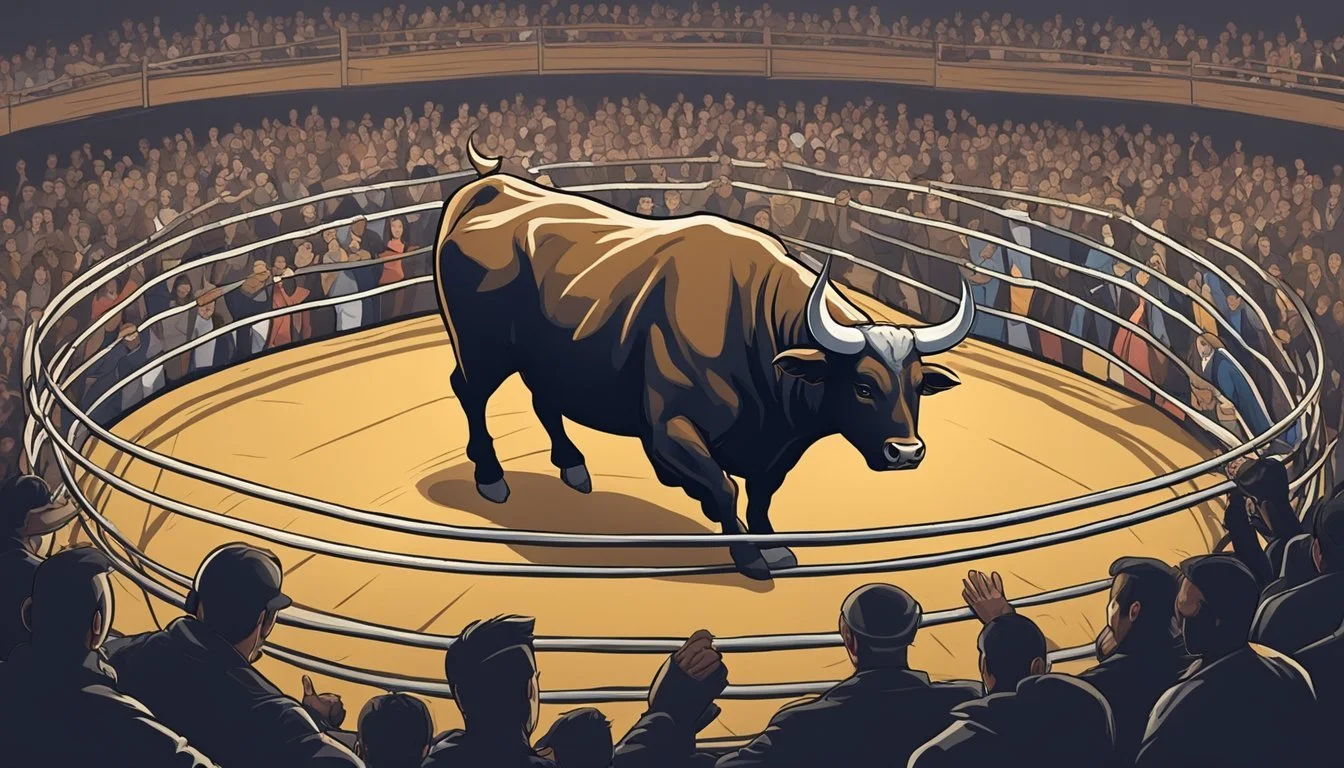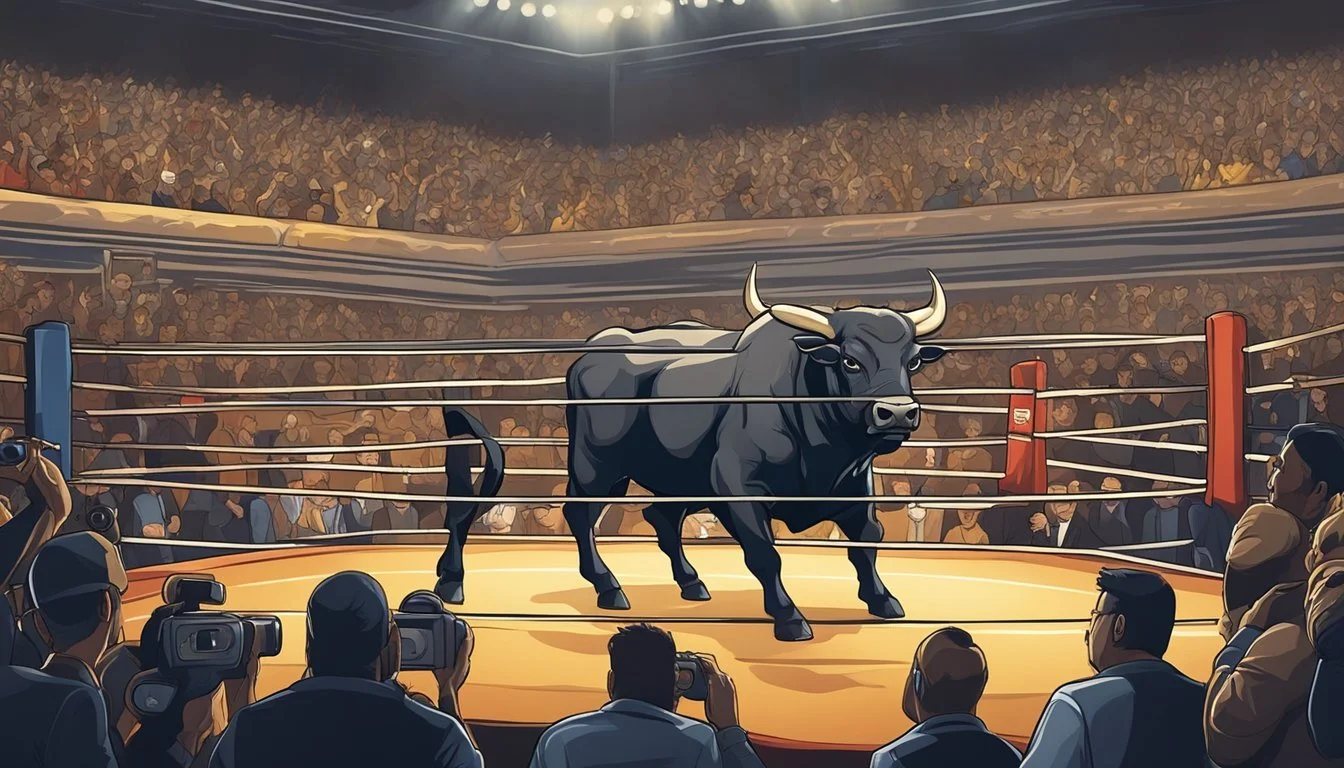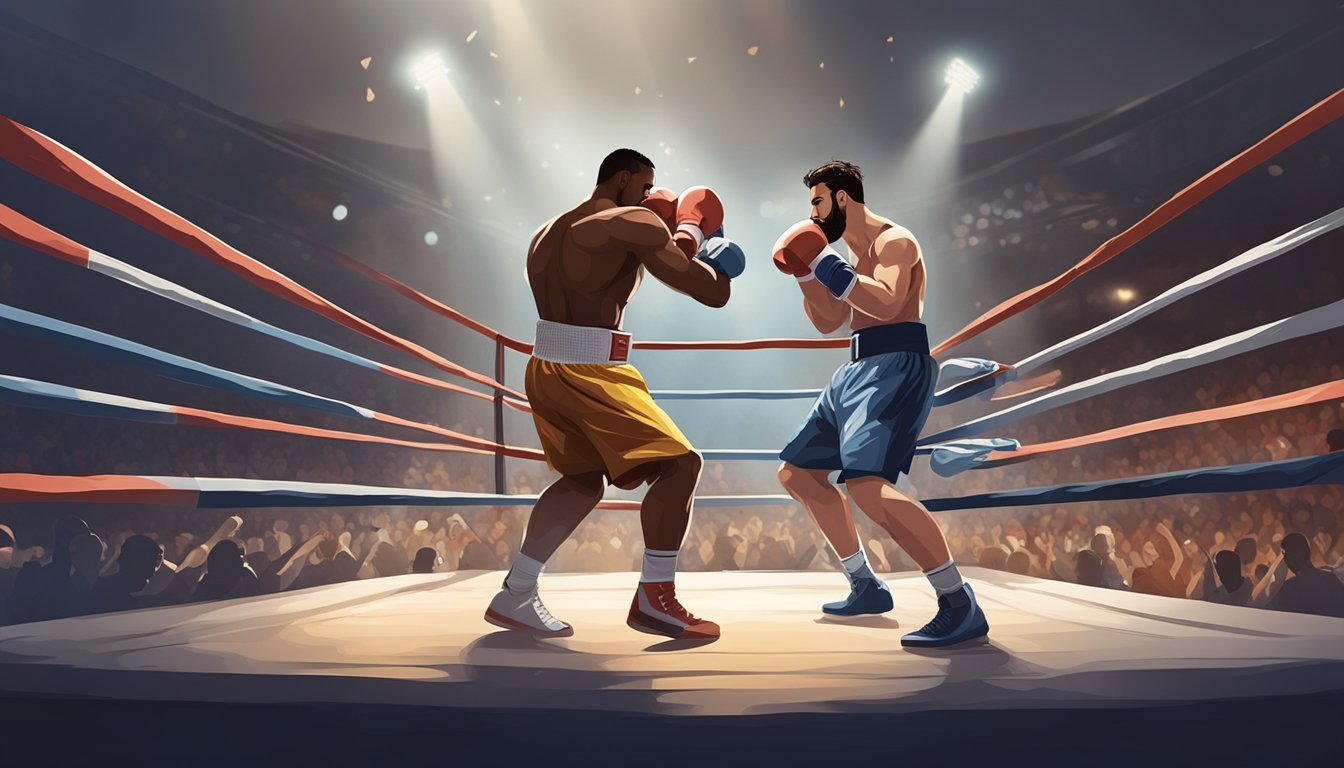Raging Bull: The True Story of Jake LaMotta
Exploring the Life of a Boxing Legend
Jake LaMotta's turbulent life and boxing career inspired one of the greatest sports films ever made. "Raging Bull," directed by Martin Scorsese and starring Robert De Niro, brought LaMotta's story to the big screen in 1980. The film was based on LaMotta's 1970 memoir "Raging Bull: My Story," which detailed his rise to become middleweight champion and his personal struggles outside the ring.
Known as "The Bronx Bull," LaMotta was a fierce competitor who employed a relentless, brawling style in the ring. He held the world middleweight title from 1949 to 1951 and fought legendary bouts against Sugar Ray Robinson. Outside the ring, LaMotta battled his own demons, including a volatile temper and brushes with organized crime.
When LaMotta first saw "Raging Bull," he was taken aback by his portrayal. He admitted to The New York Times, "I kind of look bad in it." Yet he came to accept the film's brutal honesty, acknowledging, "Then I realized it was true." The movie's unflinching depiction of LaMotta's flaws and triumphs cemented his legacy in both boxing and cinematic history.
Jake LaMotta: The Bronx Bull
Jake LaMotta, known as "The Bronx Bull," left an indelible mark on boxing history. His relentless fighting style and remarkable career trajectory made him one of the most memorable figures in the sport.
Early Life and Boxing Origins
Born on July 10, 1922, in the Bronx, New York, Jake LaMotta grew up in a tough neighborhood. He turned to boxing as a means of survival and self-defense. LaMotta's early years were marked by street fights and amateur bouts, where he developed his signature aggressive style.
His professional career began in 1941 at the age of 19. LaMotta quickly gained a reputation for his ability to absorb punches and keep moving forward. This durability, combined with his powerful punches, earned him the nickname "The Bronx Bull."
Rise to Middleweight Champion
LaMotta's path to the middleweight title was not easy. He faced numerous setbacks and tough opponents. His perseverance paid off on June 16, 1949, when he defeated Marcel Cerdan to claim the World Middleweight Championship.
As champion, LaMotta defended his title twice. His reign lasted until February 14, 1951, when he lost the title to Sugar Ray Robinson in a bout known as "The St. Valentine's Day Massacre."
Notable Matches and Rivalries
LaMotta's most famous rivalry was with Sugar Ray Robinson. They fought six times between 1942 and 1951, with LaMotta winning only once. Their bouts were intense and highly competitive, showcasing LaMotta's toughness and Robinson's skill.
Other notable opponents included:
Fritzie Zivic
Tommy Bell
Tony Janiro
Laurent Dauthuille
LaMotta's 1947 fight against Billy Fox later became controversial when he admitted to throwing the match to gain a title shot.
Retirement and Post-Boxing Career
LaMotta retired from boxing in 1954 with a record of 83 wins, 19 losses, and 4 draws. After his fighting career, he ventured into various businesses, including owning bars and acting in films and television.
In 1970, LaMotta published his memoir, "Raging Bull: My Story." This book became the basis for the critically acclaimed 1980 film "Raging Bull," directed by Martin Scorsese and starring Robert De Niro as LaMotta.
LaMotta's later years were marked by public appearances and interviews. He passed away on September 19, 2017, at the age of 95, leaving behind a legacy as one of boxing's most iconic figures.
Raging Bull: From Memoir to Screen
Jake LaMotta's raw autobiography became the basis for one of cinema's most acclaimed films. The transformation from page to screen showcased artistic vision, powerful performances, and innovative filmmaking techniques.
Adaptation of 'Raging Bull: My Story'
LaMotta's 1970 memoir provided the source material for the film. The book's unflinching portrayal of the boxer's violent life and inner demons caught the attention of filmmakers.
Martin Scorsese and screenwriters Paul Schrader and Mardik Martin shaped the memoir into a cinematic narrative. They focused on LaMotta's self-destructive tendencies and tumultuous relationships.
The adaptation process involved condensing decades of LaMotta's life into a two-hour film. Key events and characters were emphasized to create a coherent story arc.
Martin Scorsese and Hollywood Impact
Scorsese's direction elevated Raging Bull beyond a typical sports biopic. His artistic choices set new standards for biographical films in Hollywood.
The decision to shoot in black and white gave the film a timeless quality. It also evoked the feel of vintage boxing footage and 1940s film noir.
Scorsese's collaboration with editor Thelma Schoonmaker resulted in innovative editing techniques. Their work on the boxing sequences created a visceral, almost hallucinatory experience.
The film's critical acclaim solidified Scorsese's reputation as one of America's foremost directors. It earned eight Academy Award nominations, including Best Picture and Best Director.
Robert De Niro's Transformation and Method Acting
De Niro's portrayal of Jake LaMotta is considered one of the most committed performances in film history. He underwent a dramatic physical transformation for the role.
The actor gained 60 pounds to portray the older, heavier LaMotta. This dedication to authenticity set a new standard for method acting in Hollywood.
De Niro also trained extensively with the real Jake LaMotta to master boxing techniques. His ability to embody LaMotta's mannerisms and speech patterns was uncanny.
The performance earned De Niro the Academy Award for Best Actor. It cemented his status as one of the most versatile actors of his generation.
Cinematic Style and Influence
Raging Bull's visual style had a lasting impact on filmmaking. The black and white cinematography by Michael Chapman created stark, memorable images.
The film's boxing sequences broke new ground in sports cinematography. Scorsese used varying film speeds and unconventional camera angles to convey the brutality of the sport.
Sound design played a crucial role in the film's impact. The use of animal noises during fight scenes added to the primal intensity.
Raging Bull's influence can be seen in subsequent boxing films and biopics. Its unflinching portrayal of a flawed protagonist set a new standard for character studies in cinema.
Personal Life and Legacy
Jake LaMotta's tumultuous personal life and lasting impact on boxing left an indelible mark. His relationships, legal troubles, and cultural influence shaped his legacy both in and out of the ring.
Relationships and Family Dynamics
LaMotta's personal life was marked by turbulent relationships. He married seven times, with his second wife Vikki LaMotta gaining prominence after being portrayed in "Raging Bull." The boxer had six children, including his son Jake LaMotta Jr., who tragically died of liver cancer in 1998.
LaMotta's relationships were often marred by violence. He admitted to physically abusing his wives, a fact that tarnished his reputation. His daughter Christi LaMotta spoke out about the family's struggles, highlighting the complexities of living with a volatile father figure.
Despite his flaws, LaMotta maintained close ties with some family members throughout his life. His brother Joey LaMotta served as his manager during his boxing career, showcasing a mix of professional and familial bonds.
Legal Troubles and Controversy
LaMotta's life outside the ring was fraught with legal issues. In 1957, he was convicted of introducing men to an underage girl at a club he owned. This resulted in a six-month prison sentence at Rikers Island.
The boxer also faced scrutiny for his involvement with organized crime. He admitted to throwing a fight against Billy Fox in 1947, a decision that haunted his career and led to a brief suspension by the New York State Athletic Commission.
LaMotta's violent tendencies extended beyond his family, leading to multiple arrests for assault. These incidents contributed to his reputation as a troubled figure, both during and after his boxing career.
Cultural and Boxing Influence
LaMotta's impact on boxing and popular culture was significant. His fierce fighting style and ability to absorb punches earned him the nickname "The Bronx Bull." This tenacity inspired future generations of boxers and cemented his place in boxing lore.
The 1980 film "Raging Bull," directed by Martin Scorsese and starring Robert De Niro, immortalized LaMotta's life story. The movie received critical acclaim, winning two Academy Awards and further elevating LaMotta's cultural status.
In 1990, LaMotta was inducted into the International Boxing Hall of Fame, recognizing his contributions to the sport. His six-fight rivalry with Sugar Ray Robinson is considered one of the greatest in boxing history, showcasing LaMotta's skill and determination.
Death and Remembrance
Jake LaMotta died on September 19, 2017, at the age of 95. He succumbed to complications from pneumonia in a nursing home in Miami, Florida. His death marked the end of an era in boxing history.
The New York Times and other major publications commemorated LaMotta's life, highlighting both his boxing achievements and personal struggles. Fellow boxers and sports figures paid tribute to his legacy, acknowledging his impact on the sport.
LaMotta's complex life story continues to fascinate the public. His autobiography, "Raging Bull: My Story," and the subsequent film adaptation ensure that his legacy endures, serving as a cautionary tale and a testament to human resilience in the face of adversity.
Critical Response and Awards
Raging Bull received widespread critical acclaim upon its release in 1980. The film garnered numerous accolades and continues to be celebrated as a cinematic masterpiece decades later.
Film Criticism and Reviews
Critics praised Raging Bull for its raw intensity and unflinching portrayal of Jake LaMotta's tumultuous life. Many lauded Martin Scorsese's direction, citing his innovative use of slow-motion and black-and-white cinematography. Robert De Niro's transformative performance as LaMotta drew particular acclaim.
The film's exploration of masculinity, violence, and redemption resonated with reviewers. Some critics noted the movie's brutal honesty in depicting LaMotta's flaws and self-destructive behavior.
Raging Bull topped numerous "best of" lists and has been hailed as one of the greatest films ever made.
Oscar Wins and Nominations
Raging Bull received eight Academy Award nominations, including Best Picture and Best Director for Martin Scorsese. Robert De Niro won the Oscar for Best Actor, earning praise for his physical transformation and intense portrayal of Jake LaMotta.
The film also took home the Academy Award for Best Film Editing. Despite its critical acclaim, Raging Bull lost the Best Picture award to Ordinary People.
Other nominations included Best Supporting Actor for Joe Pesci and Best Supporting Actress for Cathy Moriarty.
Enduring Popularity
Raging Bull's influence has grown over time, cementing its place in film history. The American Film Institute ranked it as the fourth-greatest American movie in its 2007 list of the 100 greatest American films.
Film schools and cinephiles continue to study Raging Bull for its technical achievements and storytelling prowess. The movie's gritty realism and complex character study have inspired countless filmmakers.
Raging Bull's enduring legacy is evident in its frequent inclusion in discussions of the greatest sports films and biopics ever made.
Roles and Performances
"Raging Bull" showcases exceptional acting talent and memorable cinematic moments. The stellar cast brings Jake LaMotta's tumultuous life to the screen with raw intensity and emotional depth.
The Cast of 'Raging Bull'
Robert De Niro delivers a tour de force performance as Jake LaMotta. He famously gained 60 pounds to portray the older LaMotta, demonstrating his commitment to the role. De Niro's portrayal earned him an Academy Award for Best Actor.
Joe Pesci plays Joey LaMotta, Jake's brother and manager. Pesci's fiery on-screen presence complements De Niro's, creating a dynamic and volatile relationship between the siblings.
Cathy Moriarty makes her film debut as Vickie LaMotta, Jake's second wife. Her nuanced performance captures Vickie's complexity, from alluring young wife to weary spouse of a troubled man.
Memorable Scenes and Monologues
The film's boxing sequences are visceral and poetic. Scorsese uses innovative camera techniques to capture the brutality and grace of the sport.
De Niro's "I coulda been a contender" monologue in front of a mirror echoes Marlon Brando's famous scene from "On the Waterfront." It's a poignant moment of self-reflection and regret.
The domestic scenes between Jake and Vickie crackle with tension. Their arguments escalate from verbal sparring to physical violence, showcasing the actors' intense chemistry.
Character Analysis: Jake LaMotta
De Niro's LaMotta is a study in contradictions. He's a fierce boxer in the ring but plagued by insecurities outside it. His jealousy and rage destroy his relationships and career.
The film portrays LaMotta's descent from champion to washed-up nightclub owner. De Niro captures this transformation physically and emotionally, showing the toll of LaMotta's self-destructive behavior.
LaMotta's inability to control his temper is a central theme. The character's explosive outbursts and paranoid accusations drive the narrative, creating a portrait of a man at war with himself and the world.
Real vs. Reel
"Raging Bull" blends historical accuracy with artistic interpretation in its portrayal of Jake LaMotta's life. The film's approach to depicting boxing and LaMotta's story sets it apart from other boxing movies of its era.
Historical Accuracy and Artistic License
"Raging Bull" stays largely true to Jake LaMotta's real-life experiences while taking some creative liberties. The film accurately depicts LaMotta's boxing career, including his fierce rivalry with Sugar Ray Robinson and his middleweight championship reign.
Director Martin Scorsese and actor Robert De Niro consulted extensively with the real LaMotta during production. This collaboration ensured authenticity in portraying LaMotta's boxing style and personal struggles.
Some scenes were dramatized for cinematic effect. The film exaggerates LaMotta's violent tendencies outside the ring, particularly in his relationships. This artistic choice serves to heighten the emotional impact and explore themes of masculinity and self-destruction.
Comparison with Other Boxing Films
"Raging Bull" stands out from other boxing films due to its gritty realism and complex character study. Unlike the more uplifting "Rocky" series, Scorsese's film doesn't shy away from the darker aspects of boxing and its toll on fighters.
The film's black-and-white cinematography and innovative sound design create a visceral boxing experience. This approach contrasts with the glossier, more stylized depictions in many other boxing movies.
"Raging Bull" focuses more on LaMotta's personal demons than on boxing glory. This psychological depth distinguishes it from more conventional sports biopics, drawing comparisons to character-driven films like "On the Waterfront."





